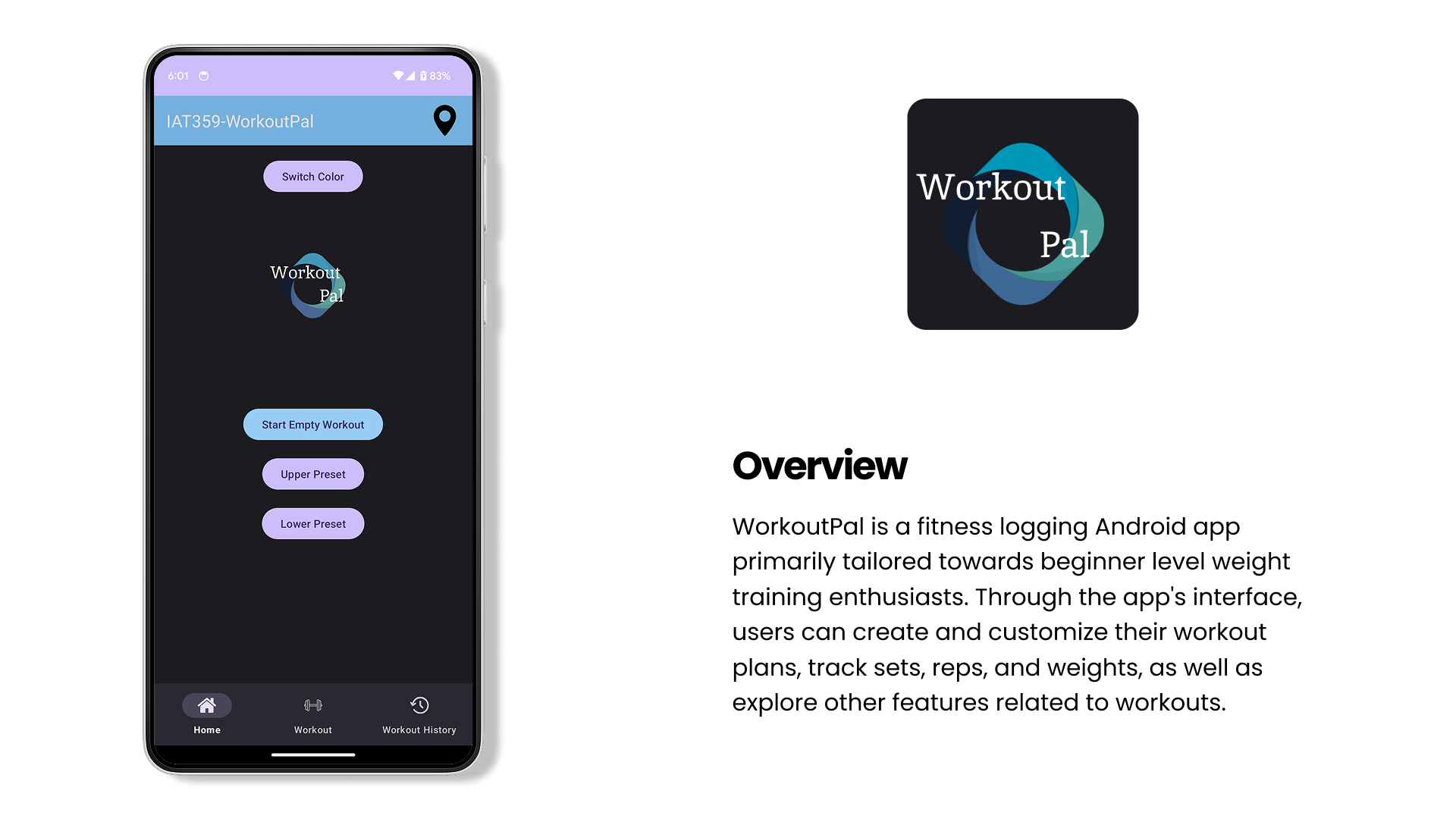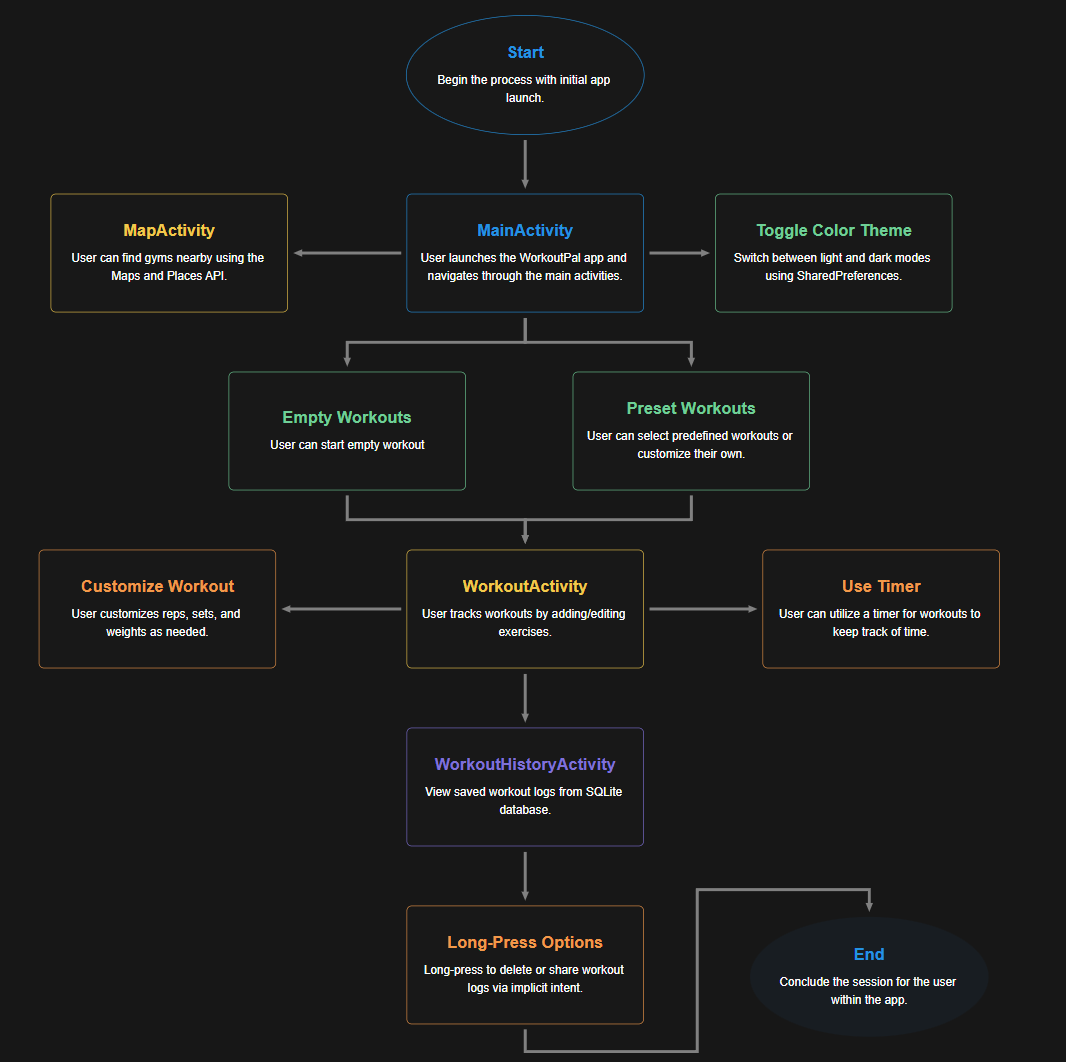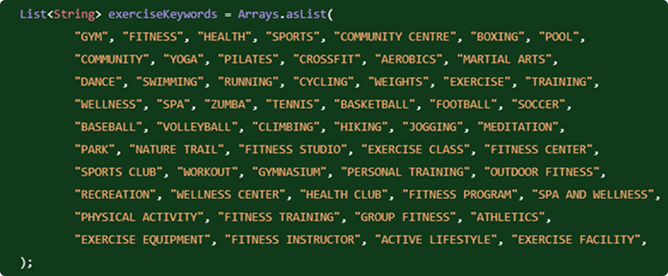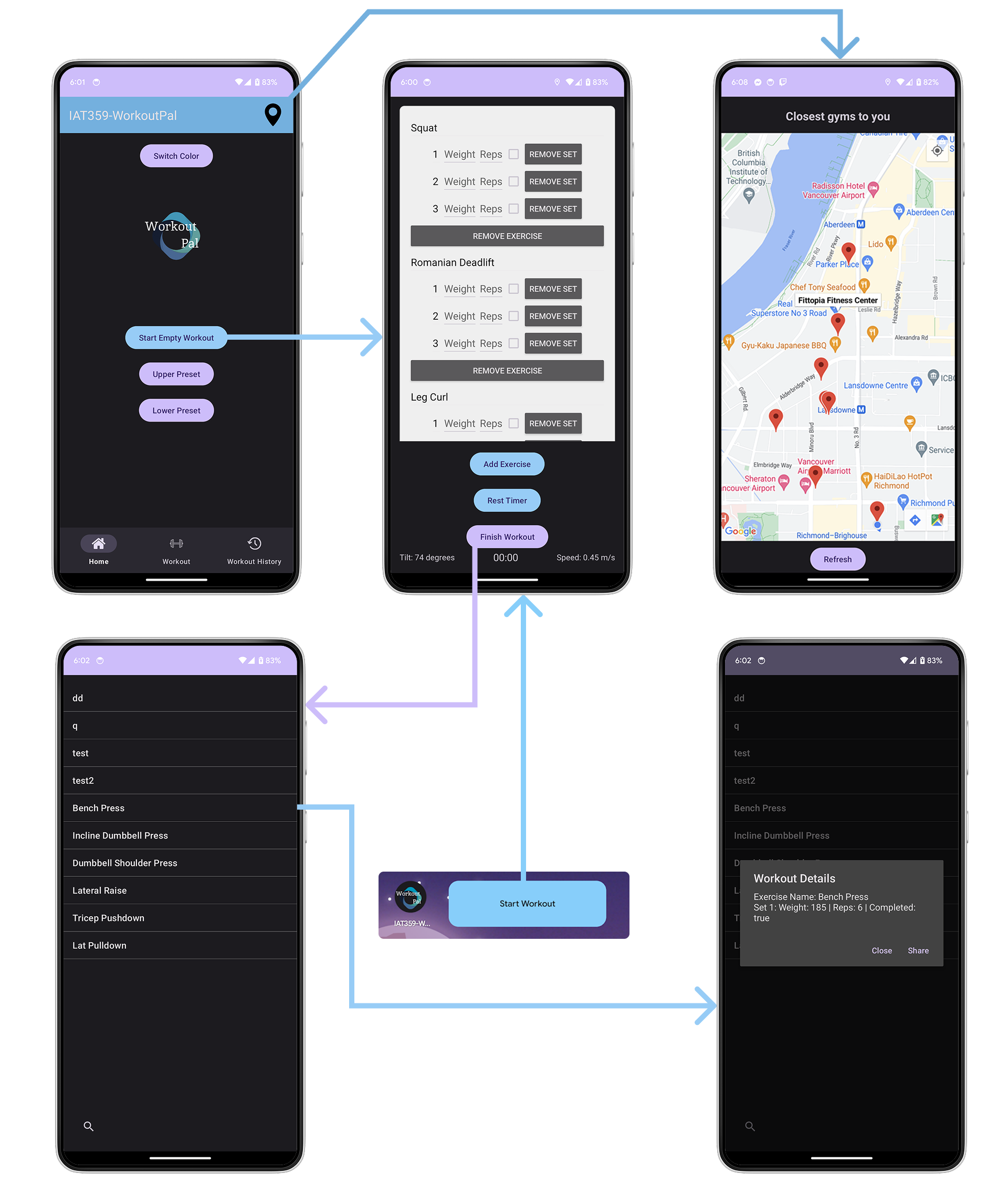WorkoutPal
Designing and Developing a UX-Focused Android Workout App
Tech Stack
- Android Studio
- Java (Android SDK)
- XML (UI Layouts)
- Android Framework Components
- SensorManager (Accelerometer, Gyroscope)
- SharedPreferences
- SQLite (Local Database)
- Google Maps & Places API
- Figma (Wireframes & UI Planning)
- GitHub (Version Control)
Role: UX Designer, Android Developer
Inspiration and Problem Space
Many gym-goers still rely on pen-and-paper or basic notes apps to track workouts and this manual approach is inconvenient and lacks structure. WorkoutPal was conceptualized to streamline this experience, especially among beginners and intermediate users. The goal was to design and build a mobile application that combines intelligent workout logging with sensor-based feedback and clean visual data representation, all within the constraints of a 13-week course.
My vision was to create an Android application specifically tailored for weight training enthusiasts who needed more than basic rep counting.
The core challenge was balancing three competing priorities:
- Creating an intuitive interface for quick exercise logging
- Implementing meaningful sensor integration
- Designing a robust data architecture that would persist complex workout records
Technical Implementation and UX Decisions
Database Architecture
Setting up the SQLite database was one of the first major challenges I ran into. At first, the app was only saving workout names. I hadn’t fully considered how difficult it would be to structure and store related data on mobile.
By using Logcat to debug, I realized the app was trying to save sets, reps, and weights as separate pieces. They weren’t linked together properly as part of one workout. This caused just the name to save, but the rest of the workout details would go missing.
I fixed this by using database transactions and adding checks to make sure all the data was valid before saving. It made me realize that backend decisions impact the user experience just as much as the front end. After all, what good is a workout tracker if it loses your progress?
Sensor Integration
Implementing the accelerometer and gyroscope required UX consideration. While the technical implementation was straightforward with Android SensorManager, deciding how to present this data demanded more thought.
I ended up positioning the sensor readings at the bottom of the workout activity after testing several layouts. This placement achieved several goals:
- Kept the focus on workout logging (primary task)
- Made sensor data glanceable but not distracting
- Prevented occlusion of key interface elements
While the sensors were posting output and functioning correctly, their real value would come from better interpretation of the raw data. For example, future versions could analyze movement patterns to detect poor form or count repetitions automatically. The use case for these direct values was more niche and probably more suited to intermediate to advanced level lifters who might want to optimize aspects like bench angles (Using the gyroscope data).
Maps API Challenges
The gym-finding feature evolved significantly through development. My initial approach using FindCurrentPlaceRequest failed because, as I discovered, gym locations don't have consistent tagging like restaurants or banks. This was a valuable lesson in API limitations and the importance of prototyping core features early.
After switching to SearchByText, I encountered Error 9011 which is an authorization issue that persisted despite having what I believed was proper API key setup. This became an important lesson in thorough documentation review. The solution came when I realized both the legacy and new Places APIs needed enabling in Google Cloud Console, a requirement that wasn't immediately obvious from the error message alone.
This experience reinforced the importance of comprehensive API research before implementation. It also highlighted how technical hurdles can directly impact user experience. If I hadn’t resolved this issue, the entire maps location finding feature would have been unusable.
Final App Activities/Screens
The app's main features were split across multiple Activities:
- MainActivity: Color theme toggle (saved via SharedPreferences), navigation to Preset Workouts and Map Activity
- WorkoutActivity: Core functionality — add/edit exercises, customize reps/sets/weights, timer functionality, and real-time sensor data display (accelerometer + gyroscope)
- WorkoutHistoryActivity: Retrieve and view workout logs via SQLite. Supports long-press deletion and sharing through implicit intents
- MapActivity: Uses Maps & Places API to display nearby gym locations with SearchByText()
- StartWorkout Widget: Added for quick access to WorkoutActivity (bonus feature)
These components were implemented incrementally, with a priority placed on functionality first and refined UI second.
Reflections and Learnings
Developing WorkoutPal taught me a lot about the relationship between technical implementation and user experience. Several key takeaways emerged from this project:
1. Data Reliability is a UX Feature: The database issues taught me that users perceive technical reliability as part of the experience. An app that loses data feels untrustworthy, regardless of how polished the interface appears.
2. Sensor Data Needs Interpretation: While implementing the sensors was technically successful, I realized raw data means little to most users. Future implementations would benefit from processed insights rather than direct output of the sensor values.
3. API Limitations Shape Features: The Maps API challenges demonstrated how platform constraints can limit feature design. This experience made me more thoughtful about having technical dependencies early in the design process.
This project was recognized as one of the few selected by my professor for inclusion in the SFU School of Interactive Arts & Technology (SIAT) Fall 2023 Project Showcase, highlighting exemplary work from within SIAT. You can view WorkoutPal's showcase profile at: SIAT Showcase - WorkoutPal.





